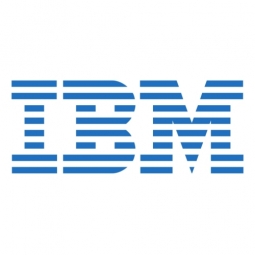公司规模
Large Corporate
地区
- Europe
产品
- IBM FileNet Content Manager
- IBM Ergonomic Judiciary Case Management system
- CENIT ECLISO
技术栈
- IBM Global Business Services
- IBM Enterprise Content Management software
实施规模
- Enterprise-wide Deployment
影响指标
- Productivity Improvements
- Cost Savings
技术
- 应用基础设施与中间件 - 数据交换与集成
- 应用基础设施与中间件 - 数据库管理和存储
适用行业
- 国家安全与国防
适用功能
- 商业运营
用例
- 过程控制与优化
- 监管合规监控
服务
- 系统集成
- 软件设计与工程服务
关于客户
本案例研究中的客户是位于中欧的一家司法部。该部在其法院系统、四个专门管辖区、检察院和监狱雇用了 40,000 多名员工。该部的基本工作是做出决策。检察官、律师和法官使用特定方法来做出这些决定。在这个欧洲司法部,这种方法被称为“关系技术”。关系技术涵盖与案件管理有关的所有活动:阅读和理解数据、对数据进行分类和结构化,以及关联来自各种来源的数据以做出最佳判断。
挑战
中欧的司法部面临着现有手动和纸质流程的挑战,这些流程速度缓慢且容易出现人为错误。IT 系统基础设施主要由断开连接的系统和数据孤岛组成,从而限制了数据访问和协作,并最终损害了利益相关者可获得数据的价值。该部寻求一种解决方案来自动化其关系技术,整合所有案件档案和司法数据,简化行政工作流程并改善协作。目标是提高效率并做出更好的决策。
解决方案
司法部聘请 IBM 全球商业服务部和 IBM 业务合作伙伴 CENIT AG 开发集成、自动化和数字化的案件管理系统。该解决方案需要灵活性,因为部门文档和数据管理要求因司法管辖区而异。推动司法判决和案件管理的流程必须符合这些要求,以及律师、检察官、法官和行政支持人员在系统中的特定角色和职责。最终的概念验证解决方案称为 IBM 人体工学司法案件管理系统。对于前端界面,该系统使用 CENIT ECLISO 案件管理和文档管理技术,并进行了扩展以包含必要的司法功能。在后端,IBM® FileNet® Content Manager 软件充当与司法案件相关的所有信息的单一存储库。
运营影响
数量效益

Case Study missing?
Start adding your own!
Register with your work email and create a new case study profile for your business.
相关案例.

Case Study
Data Capture for Afghanistan Forces
Electronic equipments on the field of Afghanistan provided information on the status of the vehicle and to identify potential threats surrounding it to the British Force. The monitoring and interpretation of this data requires robust and sophisticated digitization for data capture and communication.
Case Study
Enhancing Security and Compliance in Remitly's Global Money Transfer Service with Fastly
Remitly, an online remittance service, was faced with the challenge of securing its proprietary global transfer network. The company needed a security solution that could meet PCI requirements and protect customers' sensitive transactions through its mobile application. The solution had to be capable of defending against new and emerging attack types without impacting performance. Remitly also had to deal with irregular traffic patterns, such as a sudden spike in account transfers from a small network segment on the Pacific coastline of South America. The company needed to determine in real time whether such traffic indicated an attack or valid requests. A traditional web application firewall (WAF) would not be able to distinguish this traffic, potentially leading to customer frustration if the IP was blacklisted.

Case Study
Major Aerospace Company Automates Asset Management
The O&M division of an aerospace and global security company was using spreadsheets to manually track more than 3,000 assets assigned to students and staff. Maintaining audit trails for this high volume of equipment became increasingly time-consuming and challenging. The chore involved knowing precisely what equipment was on hand, what had been issued, its location and the name of the custodial owner of each item. Every aspect of this task was carried owner of each item. Every aspect of this task was carried out by individuals with spreadsheets. Manually documenting the full lifecycle of each asset added to the burden. This included tracking maintenance requirements and records, incidents and damages, repairs, calibrations, depreciation, and end-of-life data.

Case Study
Securing a Large Data Center in the EMEA Region: An IoT Case Study
A leading data-center operator in the EMEA region, with multiple facilities spanning over 25,000 square meters, faced significant security challenges. The operator experienced interruptions in their internal IT network due to unsupervised work of third-party technicians. Despite having a high-end building control system that provided 24x7 monitoring and control to all the building’s infrastructure, the data center was vulnerable from a cyber perspective as it was connected to the IT network infrastructure. The operator launched an urgent OT cyber security project that included both IT-OT network segmentation and OT network asset mapping and anomaly detection. The main objectives were to harden the security of the server systems, secure the facility’s power supply and server cooling system, strengthen the segmentation between building and operational systems, create a visual OT network map, and set up a system for presenting supply-chain attacks that may threaten the data center through equipment vendors’ maintenance activities.

Case Study
Leveraging Graph Technology for Enhanced Cybersecurity: A Case Study on MITRE's CyGraph
MITRE, a federally-funded, not-for-profit company that manages seven national research and development laboratories in the United States, was grappling with the challenge of managing an influx of cybersecurity data. The constant changes in network environments were impacting the security posture of U.S. government agencies. Intrusion alerts, anti-virus warnings, and seemingly benign events like logins, service connections, and file share access were all potentially associated with adversary activity. The cybersecurity researchers at MITRE needed to go beyond rudimentary assessments of security posture and attack response. This required merging isolated data into higher-level knowledge of network-wide attack vulnerabilities and mission readiness. The challenge was not the lack of information, but the ability to assemble disparate pieces of information into an overall analytic picture for situational awareness, optimal courses of action, and maintaining mission readiness. The team also struggled with fully comprehending a given security environment and mapping all known vulnerabilities.

Case Study
Enhancing Security Precision with IoT: A Case Study of Guardsman Group
Guardsman Group, a leading security company in the Caribbean, faced a significant challenge in maintaining the security of its digital infrastructure. The company provides security equipment, personnel, and systems for various businesses across the region. However, one of its offices experienced a security incident that affected all communications at that location. The existing security tools were not sufficient to provide the necessary protection, and it took hours to identify the source of the issue. This incident highlighted the need for a dynamic solution that could proactively identify threats. The company's primary concern was any disruption to its business, as it manages a significant portion of Jamaica's money and cannot afford for its operations to go down.







